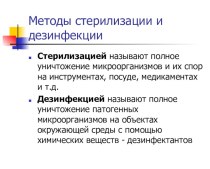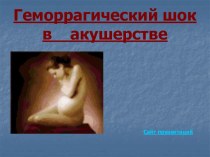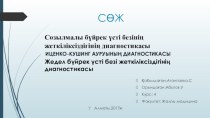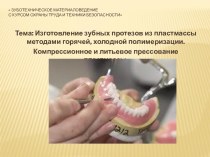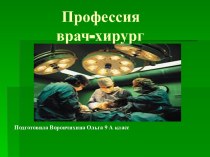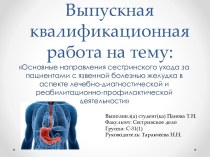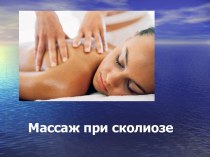- Главная
- Разное
- Бизнес и предпринимательство
- Образование
- Развлечения
- Государство
- Спорт
- Графика
- Культурология
- Еда и кулинария
- Лингвистика
- Религиоведение
- Черчение
- Физкультура
- ИЗО
- Психология
- Социология
- Английский язык
- Астрономия
- Алгебра
- Биология
- География
- Геометрия
- Детские презентации
- Информатика
- История
- Литература
- Маркетинг
- Математика
- Медицина
- Менеджмент
- Музыка
- МХК
- Немецкий язык
- ОБЖ
- Обществознание
- Окружающий мир
- Педагогика
- Русский язык
- Технология
- Физика
- Философия
- Химия
- Шаблоны, картинки для презентаций
- Экология
- Экономика
- Юриспруденция
Что такое findslide.org?
FindSlide.org - это сайт презентаций, докладов, шаблонов в формате PowerPoint.
Обратная связь
Email: Нажмите что бы посмотреть
Презентация на тему Pulpitis
Содержание
- 2. Pulpitis is an inflammation of the pulp.
- 3. Causes of pulpitisCaries progresses deeply into the dentinA
- 4. Symptoms and Signs In reversible pulpitis, pain occurs when
- 5. TreatmentDrilling and filling for reversible pulpitisRoot canal
- 6. Prevention The best way to prevent toothache
- 7. Скачать презентацию
- 8. Похожие презентации
Pulpitis is an inflammation of the pulp. The pulp is a spongy soft tissue of nerves and blood vessels encased tooth structure. In the crown, the enamel and dentine encases the pulp. When the integrity of
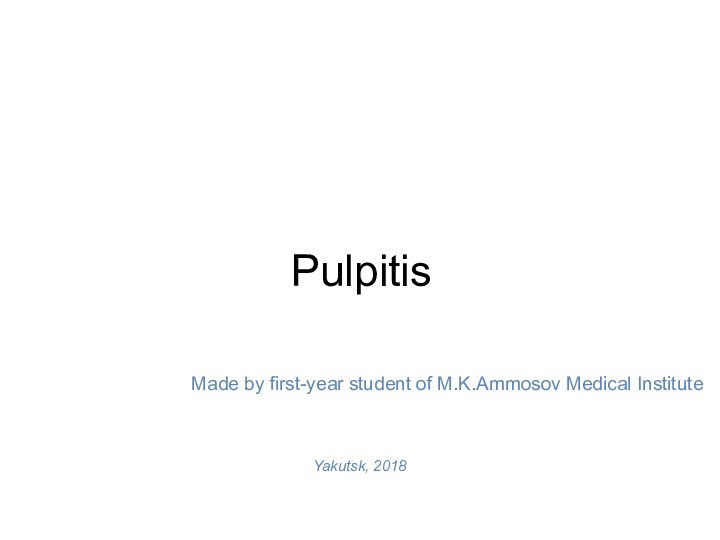
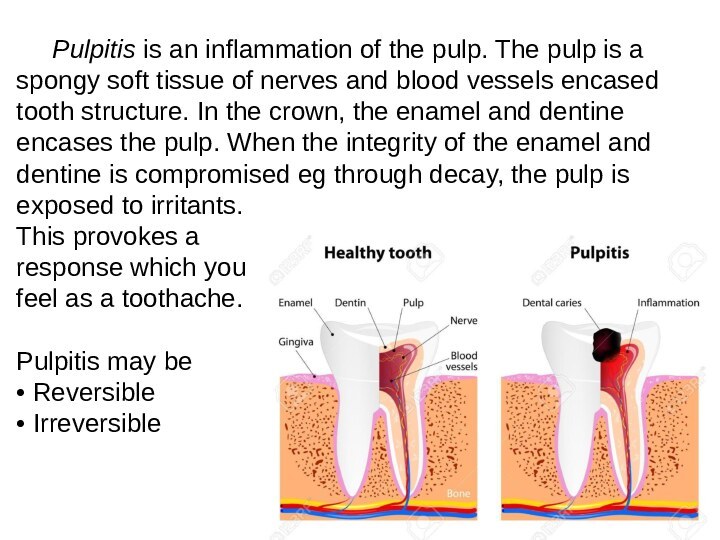
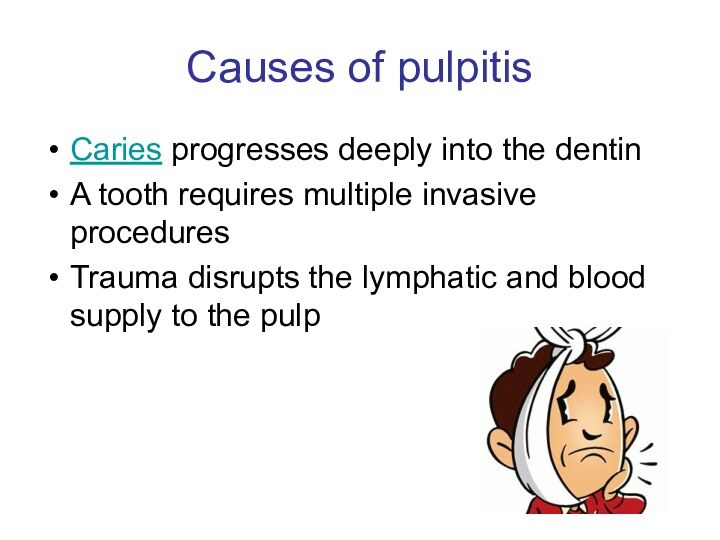
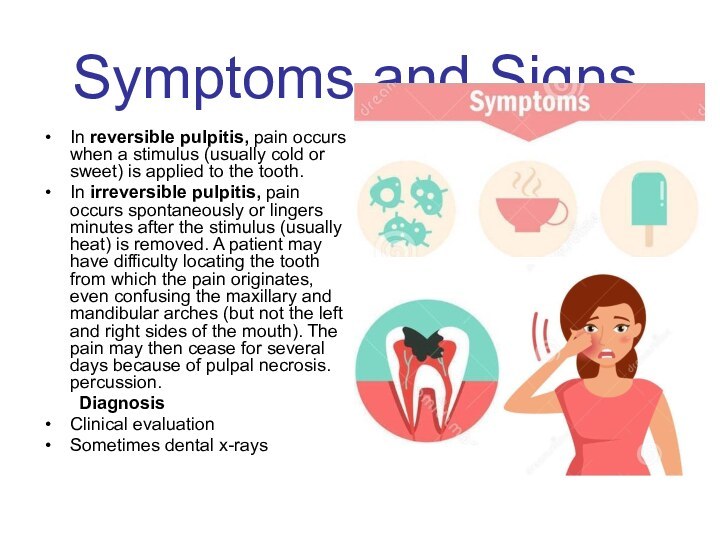

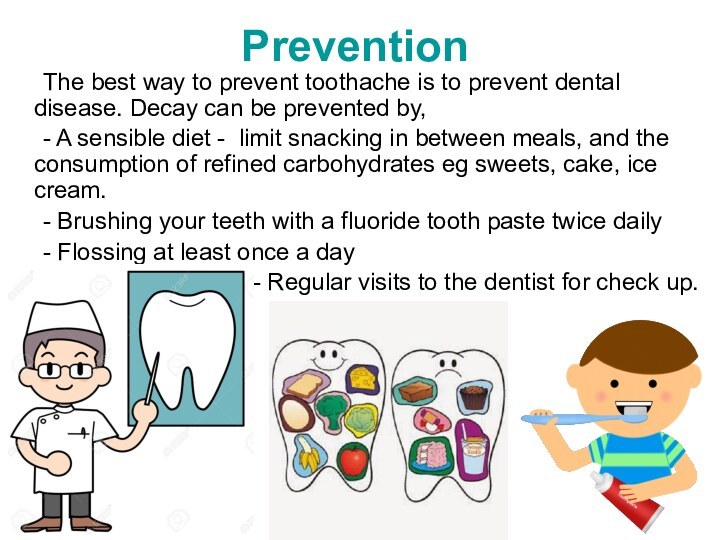

Слайд 3
Causes of pulpitis
Caries progresses deeply into the dentin
A tooth
requires multiple invasive procedures
Trauma disrupts the lymphatic and blood
supply to the pulp
Слайд 4
Symptoms and Signs
In reversible pulpitis, pain occurs when a stimulus
(usually cold or sweet) is applied to the tooth.
In irreversible pulpitis, pain occurs spontaneously or lingers minutes after the stimulus (usually heat) is removed. A patient may have difficulty locating the tooth from which the pain originates, even confusing the maxillary and mandibular arches (but not the left and right sides of the mouth). The pain may then cease for several days because of pulpal necrosis. percussion.
Diagnosis
Clinical evaluation
Sometimes dental x-rays
Слайд 5
Treatment
Drilling and filling for reversible pulpitis
Root canal and
crown or extraction for irreversible pulpitis
Antibiotics (eg, amoxicillin) for infection
In reversible
pulpitis, pulp vitality can be maintained if the tooth is treated, usually by caries removal, and then restored.In irreversible pulpitis, the pulpitis and its sequelae require endodontic (root canal) therapy or tooth extraction.
Слайд 6
Prevention
The best way to prevent toothache is
to prevent dental disease. Decay can be prevented by,
-
A sensible diet - limit snacking in between meals, and the consumption of refined carbohydrates eg sweets, cake, ice cream.- Brushing your teeth with a fluoride tooth paste twice daily
- Flossing at least once a day
- Regular visits to the dentist for check up.







